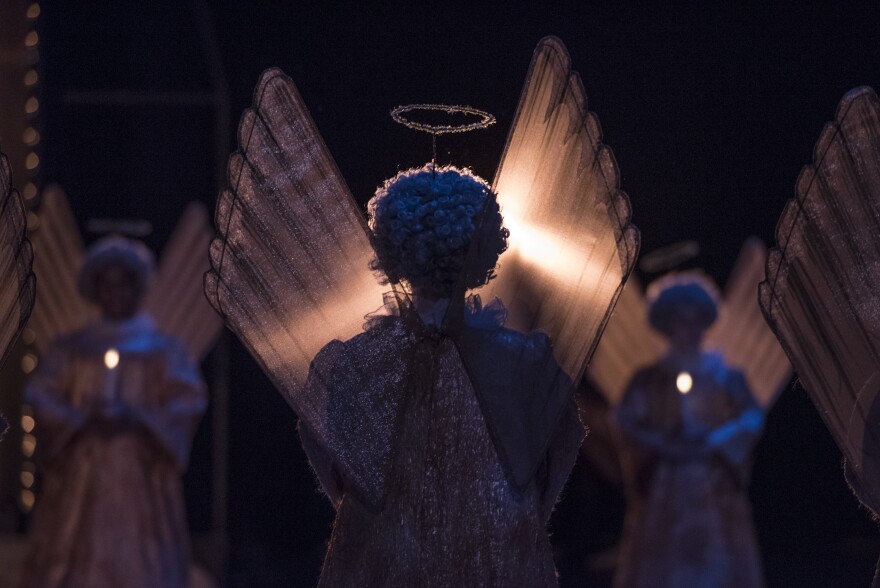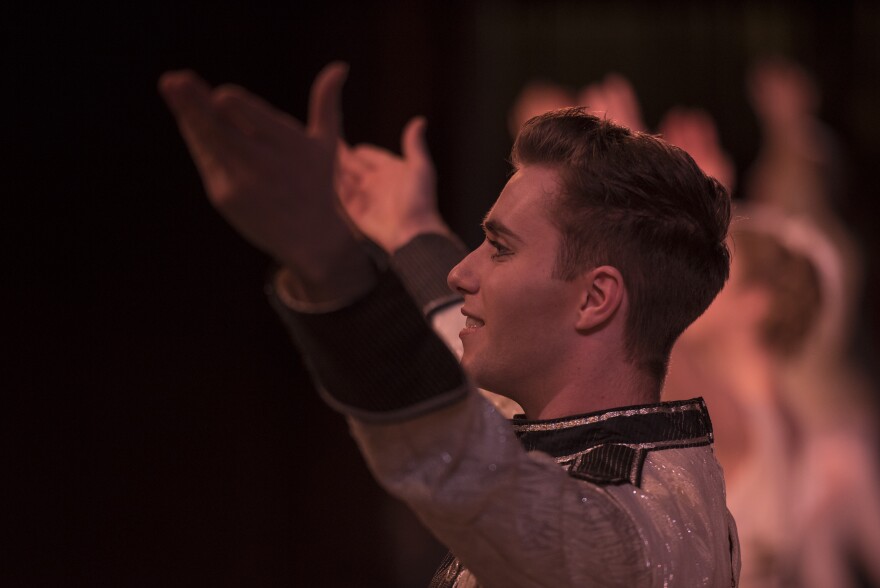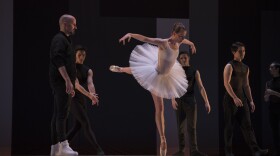This season marks the 10th anniversary of this iteration of the Louisville Ballet’s long-running tradition of presenting "The Nutcracker." Brown-Forman’s initial support to create this still fresh-looking production, and ongoing support to ensure live music from the Louisville Orchestra, is one that stands the test of time. The scenery and costumes continue to sparkle. Even with the explosion of technology in the past decade, the magical sequences still hold their own with charm and dexterity.
I’ve been reviewing this production since 2010, and always find some fresh nuance or new detail in the performances. With the various casts rotating both within each year and across the seasons, it feels like the dancers also find ways to find something new in the characters they create.
This year Annie Honebrink is again stepping into the role of Marie. It’s good to see her back on stage, as she was sidelined from performing by an injury in the spring. Honebrink has remained active with the company, blogging and writing articles, but her return to the stage is welcome. She brings a delightful wide-eyed innocence to Marie’s party and dream. Her amazement at the feats of Russian Caviar (Luke Yee, Minh-Tuan Nguyen, Trevor Williams) matches that of the audience, and her discomfort around the suddenly larger-than-life rats does not feel pantomimic.
Everything begins with Herr Drosselmeyer, this year played by Phillip Velinov. He brings a refreshing naturalism to the role; in the workshop his activity fills the music while also appearing to be necessary activity, rather than merely choreography. This approach continues into the party scene.
It’s the toys Drosselmeyer brings to the party that are the catalyst for all the magic that follows. This year Xavier Pellin takes on the Nutcracker, creating the requisite mechanical movements with precision. His magical transition into Marie’s companion into the Land of Snow is the stuff that dreams are made on. Pellin brings a clean line and good elevation to the role, he and Honnebrink having a chemistry that embodies her delight in the magic, and his enjoyment of that delight.
Ashley Thursby and Brandon Ragland each return to the roles of Sugar Plum/Doll and Cavalier/Doll respectively, for some performances, though this is the first time I’ve seen them dance these roles together. As the Dolls it seems like they are having fun with the automaton-like conceptions of classical ballet attitudes. They come into their own in their Act Two variation. Thursby brings a serene regality to the Sugar Plum, supported with calm elegance by Ragland. It was deeply satisfying to witness the more spectacular leaps, lifts, and fish dives be an organic resolution to a sequence of moves, rather than to experience an obviously muscular prep for those moments. A testament to Thursby’s understated technique and Ragland’s increasing assurance as a classical partner.
Act Two is populated by some of ballet’s most-loved variations; a series of expectant rustles in the audience as the Land of the Sugar Plum Fairy rolls out. It begins with the always adorable angels. This year’s highlights included Mark Krieger and trainee Julia Ridderhoff as the Arabian Coffee variation principals (Sunday matinee.) They both brought a sinuous grace to this variation and Ridderhoff navigated the aerial specialty with aplomb. Russian Caviar is always a crowd pleaser, and this year’s new-to-this-variation dancers did not disappoint; likewise the Chinese Tea and the ever-popular Guard Dogs. Lexa Daniels steps into the role of The Rose this year, and commands the stage with a graceful energy, filling each musical phrase to the very tip of her fingers.
This is not the first year in which the Snowflakes sequence is the least satisfying variation of the performance. Once again, these Snowflakes are less than ethereal, and many of the patterns feel scrambled, that the dancers are rushing fully to complete each move or gesture and to do so in unison. In contrast, The Flowers’ colorful patterns are crisp and clear—a cool, classical cap to the eclectic selection of sweetmeats that have come before.
A Nutcracker would not be complete without the many children who populate the production. Ben Workman is an old hand as Fritz, always bratty and holding his own with the adults with whom he interacts. The Children at the party are almost more interesting in their non-dancing moments, reacting to the magic of Christmas. The Small Rats, Soldiers, and Cossack Bear go through their proscribed paces with gusto as the battle rages on.
After 10 years of “The Brown-Forman Nutcracker," the production is successful both for its familiarity and for the sparks of newness interjected as dancers take on roles for the first time. Institutionally, the Louisville Ballet is nurturing the investment in this spectacular production to ensure that it looks fresh each year. Choreographer Val Caniparoli returns regularly to keep the choreography faithful to the original conception. It would be comforting to believe that this version of a holiday tradition might last another decade.
This story has been updated.







